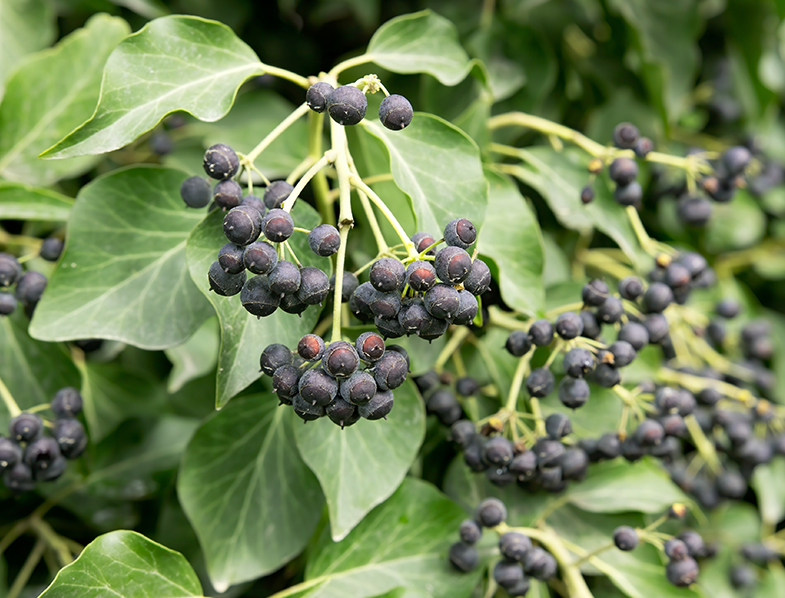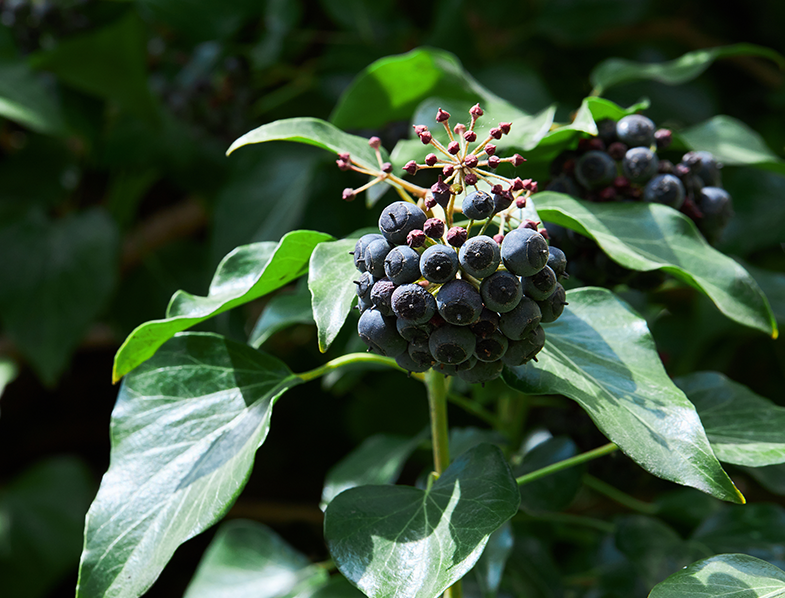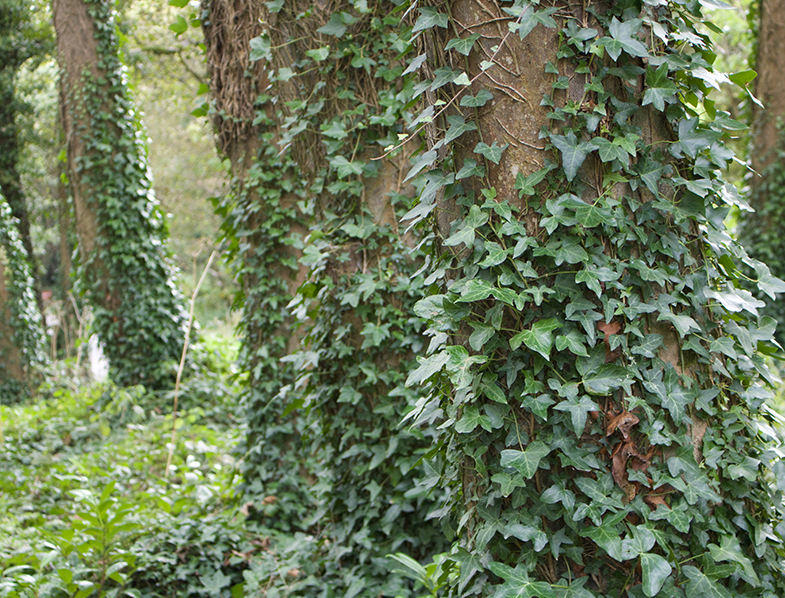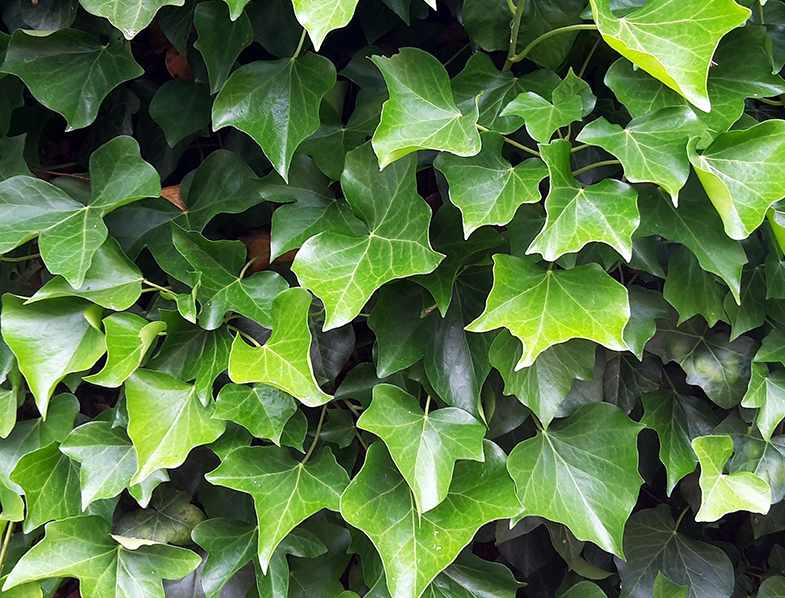Hedera hibernica, commonly known as the Irish ivy, Atlantic ivy, or Boston ivy, is a lovely ornamental perfect for every gardener that has a weakness for elegant foliage plants. Irish ivy is a spectacular species of vine that originates from the Atlantic coast of Europe. It is also woody, giving it an overall hardiness throughout most environmental conditions out there. Beauty and friendliness – an irresistible mix!
As with most species of vines, you will have to pay a little extra attention to the surroundings of your Irish ivy. This ornamental is a climbing plant that requires some support to allow it to grow and spread nicely and remain healthy. It would be wise to find a place for it where it can use cliffs, walls, trees, or artificial supports to climb on them. If you manage to do this, the rest of the caring routine comes naturally.
Are you curious to find out more about Hedera hibernica a.k.a. the Irish ivy? Keep reading our guide and become an expert Irish ivy grower!
Quick Facts
| Botanical Name | Hedera hibernica |
| Common Name | Irish ivy, Boston ivy, Atlantic ivy |
| Plant Type | Woody vine, evergreen climber |
| Mature Size | up to 10 meters (32 feet) hight and spread |
| Sun Exposure | Full sun/Partial shade |
| Soil Type | Clay, loam, chalk, sand |
| Soil pH | Neutral, Alkaline, Acid |
| Bloom Time | Autumn |
| Flower Color | Insignificant, green |
| Hardiness Zones | 5a-9b (USDA) |
| Native Area | Europe |
About Irish Ivy
- The Irish ivy is the recipient of the prestigious Award of Garden Merit, prized for its obvious exquisite features and super low-maintenance habit.
- This vine can show up in the wild both inside and outside its native area which includes Ireland, the British Isles, France, Spain, Portugal, Germany, the Baltic Sea, and Scandinavian countries. It grows mostly around forests, dense bushes, and mountains.
- Like its closely related species English ivy (Hedera helix), the Irish ivy is an invasive weed in some regions of North America that have mild winters.
- Hedera hibernica is a bit similar to Hedera helix (Common Ivy) and a great way to tell them apart is by looking at the leaves – the light veins present on the leaves are less pronounced in Hedera helix.
- The vine can become troublesome in any garden worldwide if not kept in check. It has a habit of rapidly colonizing trees, hedges, and borders.
- If you cannot provide your Irish ivy with the demanded support, do not worry too much about it! You can even treat this vine as a ground cover and everything will work just as fine as with a vertical support or surface.
- The Irish ivy looks fabulous in city gardens, courtyard gardens, informal gardens, cottage gardens, slopes, banks, flower beds and borders, and wall-side borders.
- During the autumn months, the flowers of this plant, although insignificant and without much ornamental value, are an important source of nectar for several insects including the ivy bee (Colletes hederae). Some species of small birds treat the niches this vine provides as nest sites.
- In winter, when the Irish ivy bears fruits, the berries turn into a food source for thrushes, Common wood pigeons, the Eurasian Blackcap, and Common blackbirds.
- Take some time to analyze the location where you decide to place your Irish ivy, whether it is indoors or outdoors. This vine is toxic to both humans and pets, causing unpleasant effects if ingested, so make sure your furry companions do not get into contact with the plant.

Irish Ivy Features: An Overview
- The Irish ivy belongs to the Hedera genus, sharing this genus with another 14 species of evergreen ground-creeping or climbing woody plants. The Hedera genus is one of the most popular genera of vines in the gardening world.
- This is an evergreen climbing species. When it can use a supporting surface, the Irish ivy can reach about 66 to 98 feet (20-30 m) in height. The vine uses its aerial rootlets to cling to a substrate and climb onto its support of choice.
- At first, its bark is green but turns very soon into a beautiful grey. You can recognize old branches by their light grey colour and finely furrowed bark.
- Its foliage consists of many relatively big leaves that are ovoid or with five triangular lobes. While the surface of its leaves is glossy and features dark green shades with light veins, the underside appears in pale green shades.
- In autumn, around September or October, the Irish ivy may produce small flowers. The small, yellow-green blossoms occur in clusters. They are rich in nectar.
- When the blooming period has ended, the Irish ivy bears fruits exactly where the flowers were before. The fruits are blue-black berries that look very similar to blueberries. However, they are slightly poisonous.

Growing Irish Ivy
It is safe to say that is pretty difficult to do something wrong to an Irish ivy. All you have to do is remember a few things that are beneficial in its caring routine and let the plant do its thing. This vine is so tolerant and forgiving that you will have a wonderful time with it for as long as you can keep it around. And, trust us, the Irish ivy is here to stay!
In terms of lighting, the Irish ivy is as easy-going as it can be, no matter what region you live in. This plant can thrive in any light environment ranging from full sunlight to deep shade. Still, if the sunlight is too harsh in your area, especially during the afternoon, you can find a spot where your Irish ivy can receive a bit of shade at that particular time. Other than this, you have absolutely nothing else to think about!
The Irish ivy is a vine that prefers temperatures that are more on the cooler side. The plant grows at its best in temperatures between 50 and 81 °F (10-27 °C). If you want to spoil yours as it truly deserves, just make sure you maintain the temperature around 64 °F (18 °C). This might mean that the only way to grow your Irish ivy is indoors. If this is not an option for you, you can always keep the vine outside in average outdoor conditions.
Some sap-sucking bugs may bother your Irish ivy at times, such as mealybugs, scale, aphids, and whiteflies. When an infestation occurs, the foliage usually turns yellow and becomes deformed. You can apply suitable natural insecticides to get rid of unwanted visitors as soon as possible.

Planting Irish Ivy
The Irish ivy is not particularly picky when it comes to its growing medium. However, being a moisture-loving species, it does best in soils that come along with excellent drainage. This vine also prefers substrates that are rich in humus and nutrients because they will help it grow beautifully and have luxurious foliage.
In general, Irish ivy needs more nutrients than its growing medium can give, especially if you do not grow yours in a nutrient-rich substrate. Make sure you feed your vine with a water-soluble nitrogen fertilizer designed for foliage plants. You will have to apply this product once a month from spring through fall. Try to avoid touching the leaves of your Irish ivy with fertilizer, as it can burn them irreversibly.
- About the Plant: English Ivy is a timeless houseplant grown for its lush, trailing vines and vibrant green foliage! Perfect for hanging baskets, shelves, or as a climbing accent, this fast-growing plant adds a touch of natural beauty to any space. English Ivy is easy going and easy to care for, making it a wonderful choice for a beginning green thumb! Leaf shape may vary based on availability.
- Growing Habit: English ivy is a fast growing, vining plant making it a wonderful plant to hang in a window or train to climb a trellis!
- Air Purifying: Houseplants are well known to be a healthy addition to your home due to their natural air purifying qualities. Many houseplants, including English Ivy, have been identified by NASA as able to filter toxins out of the air, allowing you to breathe easy!
- Plant Size: This plant is 4-inches in diameter, and approximately 5-7 inches tall at time of shipping. Height will vary by plant; however, we pick the best plant available for each order. Please note that you will not receive the plant in the photos as each plant is unique.
- Pot: Plant arrives in a 4-inch diameter growers pot inside of a classic-style pot cover made of plastic. This pot cover does not have drainage holes and is intended to be used as a cache pot.
- Golden Pothos is one of the easiest houseplants to grow. Low maintenance vining plant, also drought tolerant, excellent indoor plant. Excellent for new plant parents.
- The Costa Farms Golden Pothos 2-Pack is an excellent choice to jump-start or add to your plant collection.
- Water Devil's Ivy Pothos with approximately 1/2 cup of water about once a week. Adjust as needed for your environment.
- Grow Devil's Ivy Pothos in medium, indirect light for the best growth and enjoy!
- Height at shipping is approximately 8-inches tall, measured from the bottom of the pot to the top of the plant. Ships in a 4-inch diameter grower pot.
- 『𝗜𝗡𝗖𝗟𝗨𝗗𝗘𝗦』 (1) Beautiful live, easy to grow Hedera helix Kolibri houseplant. Ivy Kolibre has dainty yet strong trailing vines, best seen cascading down from a hanging basket or container. It makes a beautiful adornment for any interior decor or landscape.
- 『𝗔𝗜𝗥-𝗣𝗨𝗥𝗜𝗙𝗬𝗜𝗡𝗚, 𝗧𝗢𝗫𝗜𝗡-𝗥𝗘𝗠𝗢𝗩𝗜𝗡𝗚』This plant helps to purify your air and remove common toxins
- 『𝗚𝗥𝗘𝗔𝗧 𝗚𝗥𝗘𝗘𝗡 𝗛𝗢𝗠𝗘 𝗗𝗘𝗖𝗢𝗥』Use your houseplants to brighten your living space or even your home office.
- 『𝗪𝗢𝗡𝗗𝗘𝗥𝗙𝗨𝗟 𝗚𝗜𝗙𝗧』For plant lovers that is beautiful, and practical.
- 『𝗡𝗢𝗧𝗘𝗦』We ship all year round, if your area is cold (under 40 degree), please consider purchasing a Heat Pack to add to your order: https://www.amazon.com/dp/B0BL6S6XHS?ref=myi_title_dp
Last update on 2025-08-18 / Affiliate links / Images from Amazon Product Advertising API
Since this plant spreads as wants whenever and wherever it wants, this habit might become pretty annoying in time. If you feel like your Irish ivy tends to occupy more space than you first imagined, you can always adopt pruning. This is a mandatory part of the caring routine for most gardeners and your plant can even benefit from it. You can cut the vine short once every year in spring. During this process, we suggest you also remove those leaves that look yellow, withered, or unhealthy.
Watering Irish Ivy
As mentioned earlier, the Irish ivy is a vine that loves and needs water, even more than nutrients. Thus, this will become the only care routine that must be done regularly. Do not panic, though! This does not mean you will have to be overly attached to it daily to keep its well-being at optimal levels.
The Irish ivy thrives with consistently moist soil but will also withstand short periods of drought if necessary. Generally, this vine needs another drink when the soil is dry so the frequency of watering may vary depending on factors like the region you live in, the season, and how often rainfalls show up. The watering schedule should be adapted to the environment and it can range from once a week to more often drinks, in case the weather is hot and dry.
If you are growing your Irish ivy in a pot, water it when the substrate feels dry to the touch. You will know when to stop once the water drains from the pot. This is the moment when you should remove the accumulated water from the tray to avoid issues like root rot.

Propagating Irish Ivy
The glamorous appearance of the Irish ivy stands in its foliage, so it is pretty intuitive what propagation material serves you best if you want more specimens for your collection. Yes, we are talking about stems, which you can cut during the summer months to create new Irish ivy babies! This technique is for everyone and you will be surprised how easy you can do it even if you are a beginner.
First things first, you must look for young, semi-hardwood cuttings on your Irish ivy. When you find them, take as many cuttings as you want of about 4 to 6 inches (10-15 cm). Try to include at least one pair of leaves in the upper half of each cutting and remove all foliage you can find in the lower half.
Next, put each Irish ivy cutting in its container filled with water. Move the containers to a cool environment and make sure the air humidity is at relatively high levels. We recommend you change the water once every two or three days to maintain the propagation medium constantly fresh.
With proper conditions, the Irish ivy cuttings will produce roots in little to no time. When this happens and the roots are about 2 to 3 inches (5-8 cm) long, you can move the cuttings to a pot filled with well-draining soil. At this moment, you have two options: either plant each cutting in its pot or use three to five cuttings in a container for a more full-looking mature Irish ivy in the future.
In case you want more Irish ivy specimens for your outdoor setting, you can plant the cuttings directly in the soil and treat them as mature vines. You can also use some of the cuttings to create a gorgeous gift for a plant-loving family member or friend!

In Conclusion
Hedera hibernica, commonly referred to as the Irish ivy is an alluring plant companion that can fill your house, inside and outside, with lots of life through its magnetic presence. And what this vine asks for in return? Minimal effort regarding its growing and caring routine but lots of love. Irish ivy is evergreen and it can climb different surfaces but it can also make a great groundcover. It is home to many different species of birds and insects and it will attract native bees to your outdoor area.
f you have fallen in love with the Irish ivy, we totally get it! The good news is that you can easily become an expert grower as this low-maintenance ornamental vine will not require much attention. As long as you provide it with plenty of moisture and sunlight, your Irish ivy will thrive. Irish ivy can easily adapt to a wide range of environments as long as its basic needs are met and, as a fast growing plant, will quickly become an important member of your plant family.
Are you growing Hedera hibernica a.k.a Irish ivy? Share your experience in the comments section!



